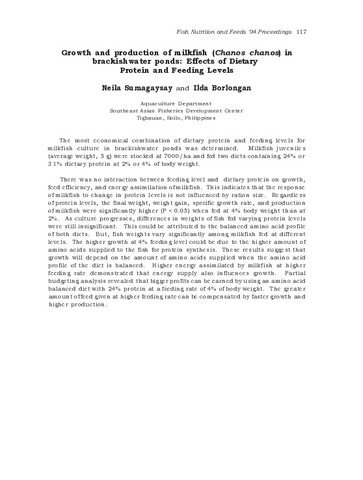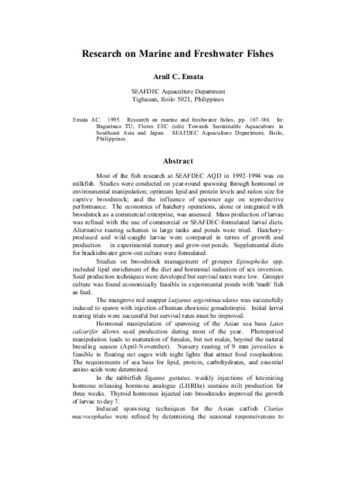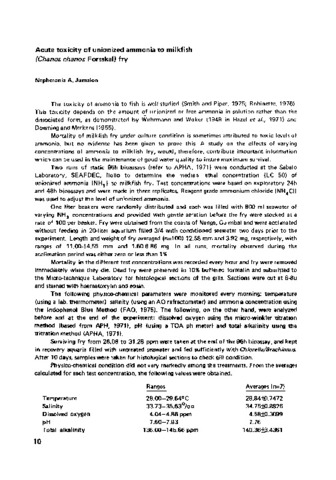Growth and production of milkfish (Chanos chanos) in brackishwater ponds: effects of dietary protein and feeding levels
- Global styles
- MLA
- Vancouver
- Elsevier - Harvard
- APA
- Help
Share
Abstract
The most economical combination of dietary protein and feeding levels for milkfish culture in brackishwater ponds was determined. Milkfish juveniles (average weight, 5 g) were stocked at 7000/ha and fed two diets containing 24% or 31% dietary protein at 2% or 4% of body weight.There was no interaction between feeding level and dietary protein on growth, feed efficiency, and energy assimilation of milkfish. This indicates that the response of milkfish to change in protein levels is not influenced by ration size. Regardless of protein levels, the final weight, weight gain, specific growth rate, and production of milkfish were significantly higher (P < 0.05) when fed at 4% body weight than at 2%. As culture progresses, differences in weights of fish fed varying protein levels were still insignificant. This could be attributed to the balanced amino acid profile of both diets. But, fish weights vary significantly among milkfish fed at different levels. The higher growth at 4% feeding level could be due to the higher amount of amino acids supplied to the fish for protein synthesis. These results suggest that growth will depend on the amount of amino acids supplied when the amino acid profile of the diet is balanced. Higher energy assimilated by milkfish at higher feeding rate demonstrated that energy supply also influences growth. Partial budgeting analysis revealed that bigger profits can be earned by using an amino acid balanced diet with 24% protein at a feeding rate of 4% of body weight. The greater amount of feed given at higher feeding rate can be compensated by faster growth and higher production.
Description
Abstract only
Type
Conference paperCollections
Related items
Showing items related by title, author, creator and subject.
-
Research on marine and freshwater fishes
Emata, Arnil C. (Aquaculture Department, Southeast Asian Fisheries Development Center, 1995)Most of the fish research at SEAFDEC AQD in 1992-1994 was on milkfish. Studies were conducted on year-round spawning through hormonal or environmental manipulation; optimum lipid and protein levels and ration size for ... -
Experiments on the induced spawning and larval rearing of the milkfish, Chanos chanos (Forsskal) in 1979
Juario, J. V.; Natividad, M.; Quinitio, G.; Banno, J. (Aquaculture Department, Southeast Asian Fisheries Development Center, 1979)This paper summarizes the results of the experiments on the induced breeding and larval rearing of milkfish during the 1979 season. -
Acute toxicity of unionized ammonia to milkfish (Chanos chanos Forsskal) fry
Jumalon, Nepheronia A. (Aquaculture Department, Southeast Asian Fisheries Development Center, 1979)







